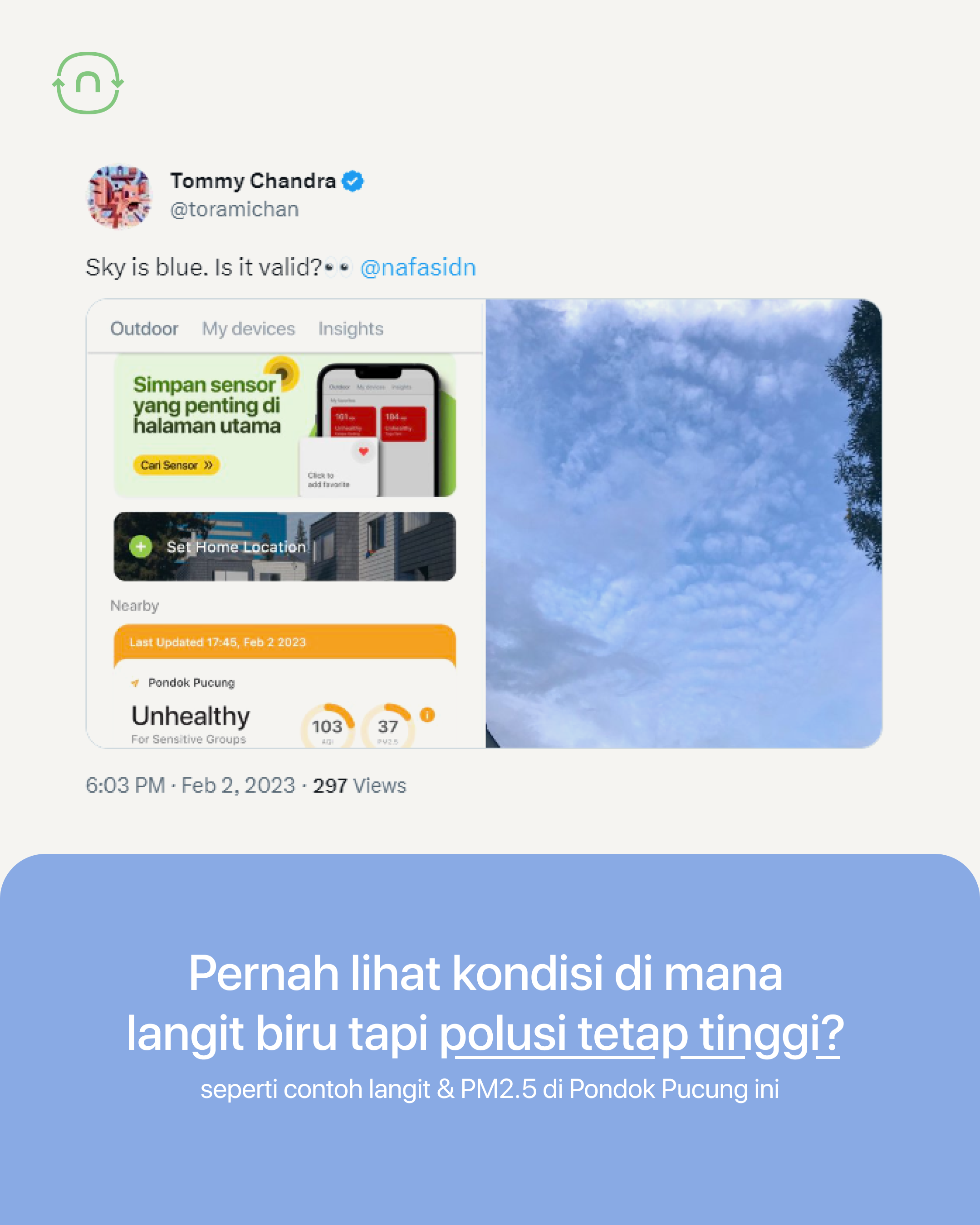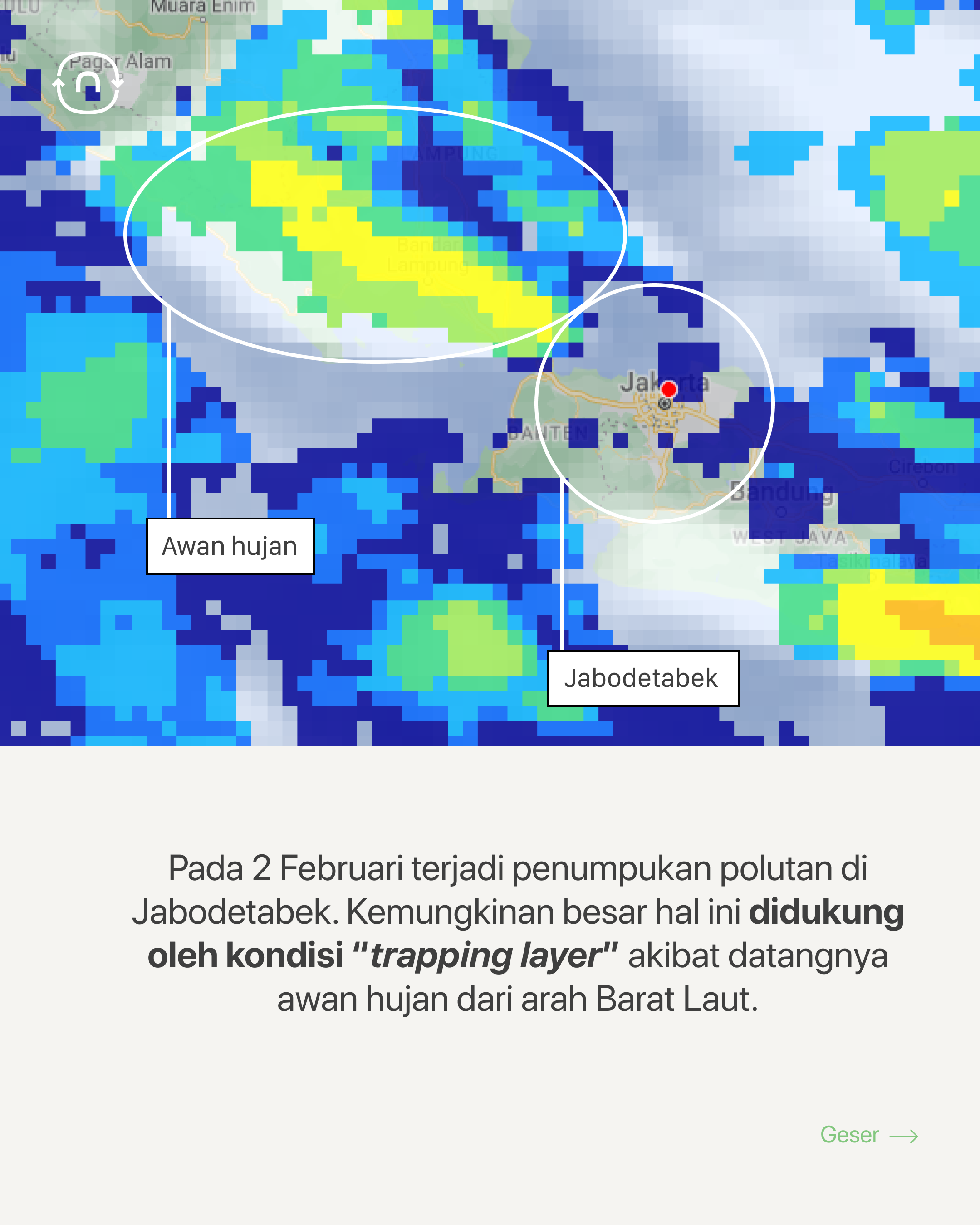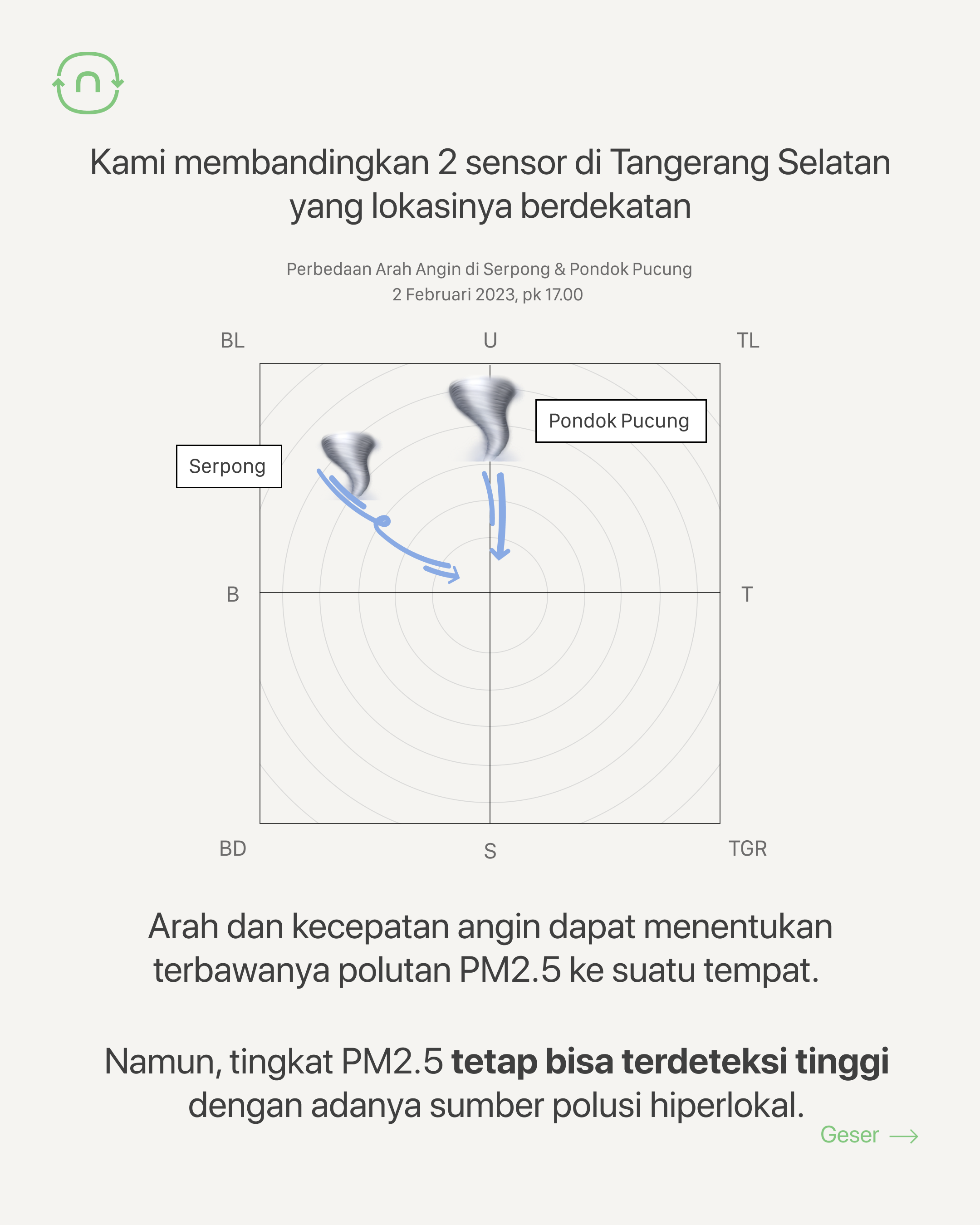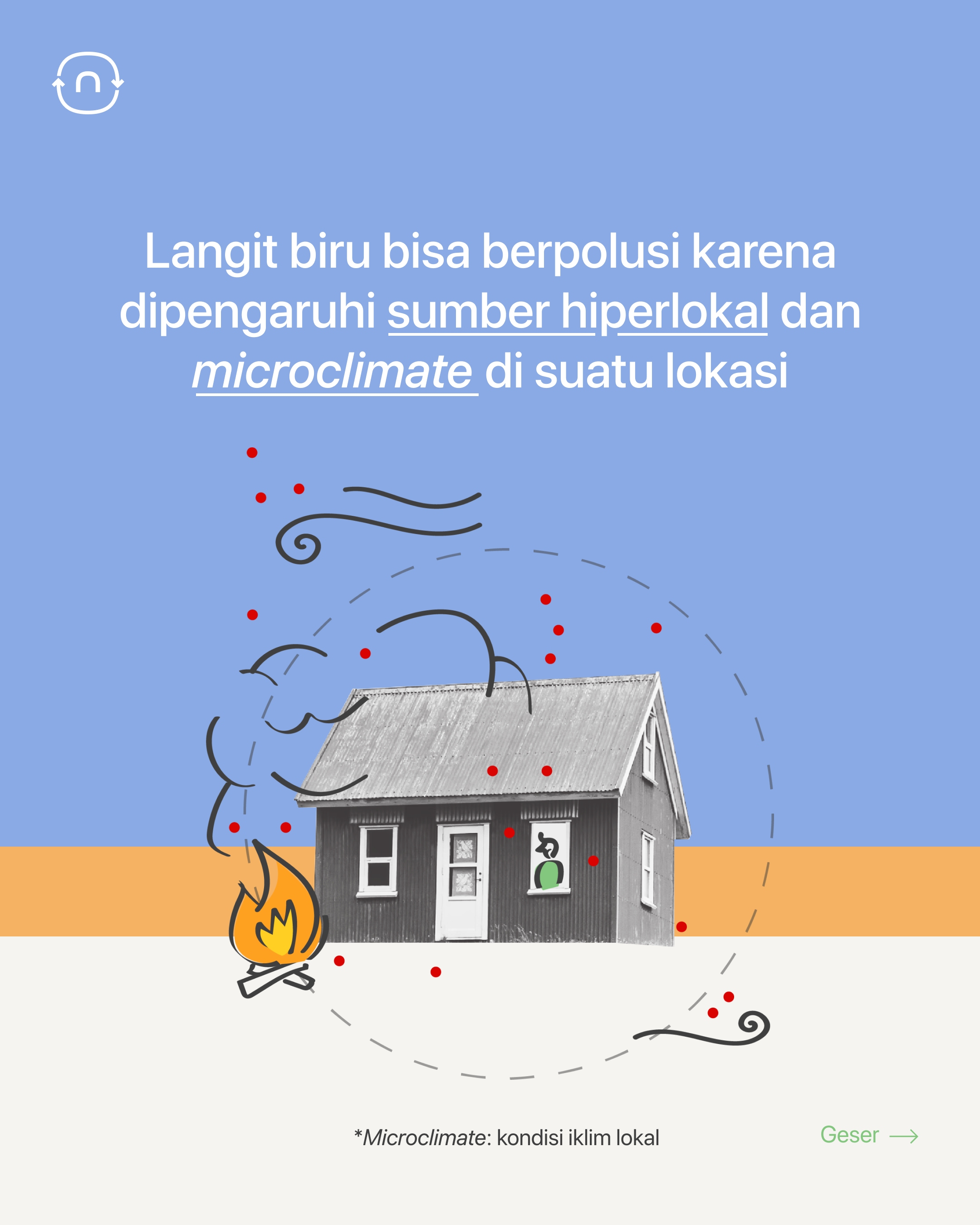Sorry, Blue Skies Don't Guarantee Clean Air!
💡 Summary:
- Blue sky can't be an accurate air quaility parameter.
- A region can remained polluted and the sky still looked clear because of the hyperlocal pollution and micro-climate.
- The only way we can know the air quality is by measuring it.
When we look up at the sky, we often see a beautiful blue color. But does this mean that the air is clean and healthy?🤔
Many people assume that a clear blue sky indicates clean air, especially because of the slogan for "The International Day of Clean Air for Blue Skies" by the United Nations, celebrated on September 7th each year. However, the brightness of the sky doesn't guarantee clean air. Let's find out why!💡
Let's bust this myth with some data that proves it wrong.
Let's examine the data from a specific day when the sky appeared bright blue. We'll focus on Pondok Pucung on February 2nd, 2023, during the noon when the boundary layer is higher, allowing the air to move more freely towards the sky.
The boundary layer is the lower part of the atmosphere closest to the earth's surface. You can read more about it here: Link to more information about the planetary boundary layer.
However, the air quality in some areas didn't match the expected conditions. Some places had relatively bad air quality, while others had very good air quality. In certain areas like South Tangerang, Pondok Pucung, there was an unhealthy air alert specifically for sensitive groups. Several factors contributed to this situation, including local sources of pollution and the overall atmospheric conditions.
At the time when the photo was taken, there were rain clouds moving from the Banten area towards Jabodetabek. This type of condition can lead to the accumulation of pollutants, especially when combined with the movement of rainy clouds. You can observe the presence of grayish clouds, known as Stratus, in the photo. These low-level clouds can be an early indication of pollutant accumulation near the sensor, especially when the wind speed is not high.
If we take a closer look at the weather sensor and PM2.5 (particulate matter with a diameter of 2.5 micrometers or less) readings in Pondok Pucung compared to another sensor in Serpong, we can see that they have different wind directions and PM2.5 concentrations. This means that even though they are located in the same city, there are micro-environmental and local climate variations in each area. Pollution sources in Pondok Pucung might be coming from the north, while in Serpong, they might come from the northwest. To determine the exact sources, further on-site investigations would be needed, but it's possible that hyperlocal activities play a role.
However, there's good news! After the rain and wind, there is a possibility of healthier air. In just under twelve hours, the PM2.5 concentration improved by almost 82%, dropping from 36 to 6 micrograms per cubic meter in the early morning. This demonstrates that the concentration of pollutants in the air depends on how the atmosphere behaves and can serve as an early indicator of the amount of pollutants emitted from local sources near the sensor.
In conclusion, we can see that blue skies don't guarantee clean air due to various factors such as the characteristics of the area, local sources of pollution, and the supporting atmospheric conditions that can lead to the accumulation of pollutants. Since the atmosphere is constantly changing and air pollution is not visible to the naked eye, it's important to regularly check the data and understand the contributing factors.
✅ Lastly, it's crucial to pay attention to sensitive groups, such as children who play outside during noon, outdoor workers, and people who exercise, as they are at a higher risk since their exposure to pollutants can worsen their symptoms.